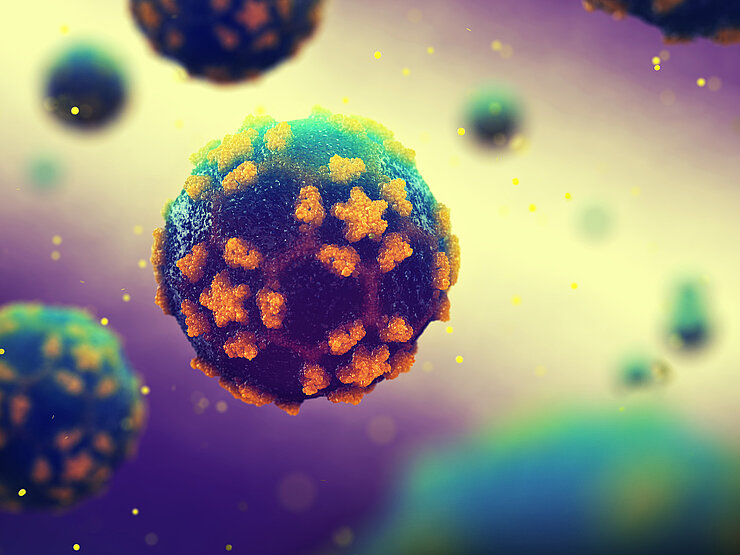Poliomyelitis
The poliovirus belongs to the group of enteroviruses that can replicate in the human intestine and occurs in three types - types 2 and 3 are now considered eradicated, type 1 still circulates in endemic areas. In 2024, these were only Pakistan and Afghanistan. The viruses are transmitted under poor hygienic conditions through smear or droplet infections and, in particular, through water contaminated with feces.
The horror that poliomyelitis caused a few decades ago is now difficult to convey. However, the common term “infant paralysis” for poliomyelitis was not entirely accurate: The disease only triggered the dreaded paralysis in a small proportion of patients. Although children were particularly frequently affected, as the initial infection often occurred in childhood, they were by no means the only ones. In most cases (around 70 percent of those infected), the infection goes unnoticed or only causes mild symptoms. However, a very small proportion of those infected suffer an infection of the nervous system. This form of the disease can lead to meningitis and the dreaded permanent paralysis. The paralysis can also affect the respiratory muscles and therefore be life-threatening.
Live and inactivated vaccines against polio
In 1955, Jonas Salk successfully completed the development of the first vaccine, a so-called “inactivated vaccine” made from killed pathogens, which was administered by injection. The use of this vaccine, known as IPV (inactivated polio vaccine), significantly reduced the number of new cases in the USA. The live vaccine OPV (oral polio vaccine), developed shortly afterwards by Albert Sabin and administered as a so-called “oral vaccine”, brought about the nationwide breakthrough in most European countries. In Germany, OPV was used on a large scale from 1960 (GDR) and 1962 (FRG) and soon led to the widespread disappearance of polio.
The IPV vaccination, which is now standard everywhere in Europe, reliably protects those vaccinated against the disease. However, people vaccinated with IPV can still become infected with polio viruses and excrete them unnoticed, thereby spreading them further.
In contrast to the inactivated IPV vaccine, OPV contains live, attenuated viruses and immunizes the intestinal tract more effectively. The vaccine is also cheaper to produce and easier to administer. However, there is always a small risk that the viruses mutate and become more dangerous again. In rare cases, the attenuated vaccine viruses can change in such a way that they trigger a symptomatic infection again. They can then cause paralysis in people who are not or insufficiently vaccinated (vaccine-associated paralytic poliomyelitis, VAPP). In Germany, where polio has been eradicated, the live OPV vaccine has therefore no longer been used since 1998 and only IPV is used for vaccination.
Campaign to eradicate the poliovirus
The poliovirus has only one natural host - humans. This makes the virus a candidate for global eradication, as there are no animal reservoirs from which the virus can re-emerge. In 1988, the World Health Organization (WHO) launched the Global Polio Eradication Initiative (GPEI). Thanks to the successful vaccination campaign, the number of cases of the disease has fallen dramatically worldwide, from 350,000 in 1988 to less than 100 in the years since 2021. GPEI also supports the development of surveillance measures such as wastewater testing in order to detect potential outbreaks at an early stage. In order to truly eradicate polio completely one day, the vaccination rate must be kept high, even in countries like Germany where the virus is not currently circulating.
(cwe)
Status: November 2025


